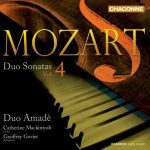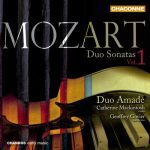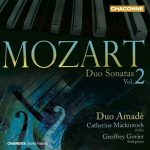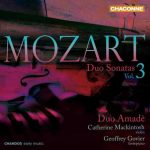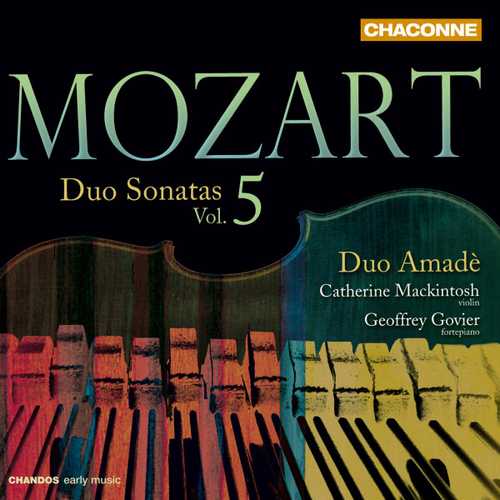

Composer: Wolfgang Amadeus Mozart
Performer: Duo Amadè, Catherine Mackintosh, Geoffrey Govier
Format: FLAC (tracks)
Label: Chandos
Catalogue: CHAN0785
Release: 2012
Size: 1.07 GB
Recovery: +3%
Scan: yes
Violin Sonata No. 28 in E flat major, K380
01. I. Allegro
02. II. Andante con moto
03. III. Rondo: Allegro
Violin Sonata No. 32 in B flat major, K454
04. I. Largo – Allegro
05. II. Andante
06. III. Allegretto
Violin Sonata No. 36 in F major, K547 ‘For Beginners’
07. I. Andantino cantabile
08. II. Allegro
09. III. Andante con variazioni
Catherine Mackintosh and Geoffrey Govier formed Duo Amadè in the 1980s, specifically to perform the charming and intimate works for keyboard and violin by Mozart in concert.
This disc marks the conclusion of the five-volume series. ‘Engaging performances that gently seduce the listener… so alluring and believable it feels as though one has travelled back in time in a musical Tardis’, wrote Classic FM of Vol. 4 (CHAN0781). In this final volume, featuring the sonatas KV 454 and KV 547, Duo Amadè once again offers historically informed performances of a similar spirit and style.
The violinist Catherine Mackintosh has long been recognised as a pioneering early music performer, and in recording the complete cycle of duo sonatas by Mozart she is fulfilling the ambition of a lifetime. Best known as the former leader of the Orchestra of the Age of Enlightenment, she plays with The Purcell Quartet, among others, and is a distinguished teacher.
Her partner in Duo Amadè is the fortepianist Geoffrey Govier, who over the last twenty years has worked with singers such as Gerald Finley, Charles Daniels, and Catherine Bott, the horn player Andrew Clark, and the chamber groups Ensemble Galant and The Revolutionary Drawing Room. He finds time for both editorial work and research into the development of the fortepiano.
Geoffrey Govier plays an instrument made by Christopher Clare in Cluny after Anton Walter, while Catherine Mackintosh plays a violin by Giovanni Grancino, dating from 1703. The instruments bring a lightness and freshness of articulation to these delightful works, entirely in keeping with the spirit of enlightenment in which the sonatas were written.
